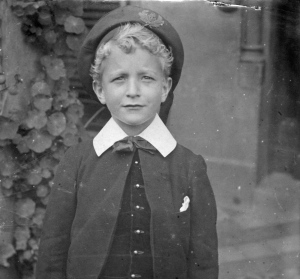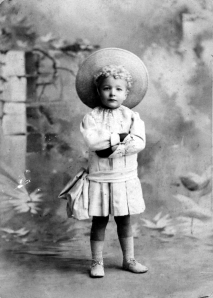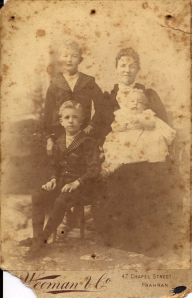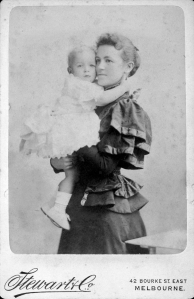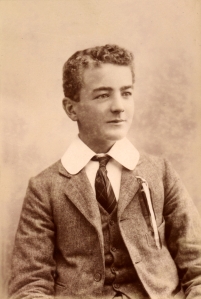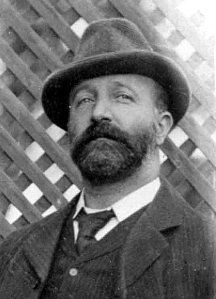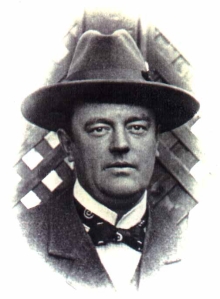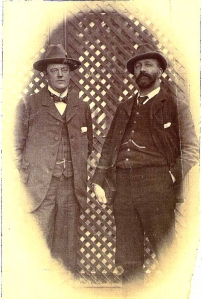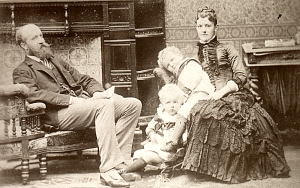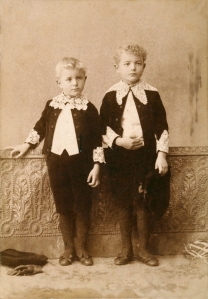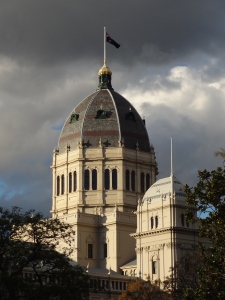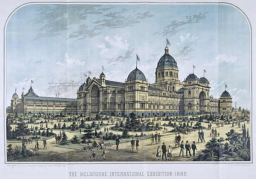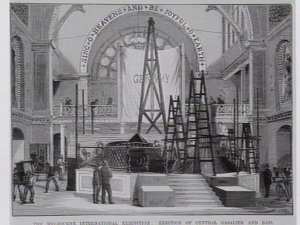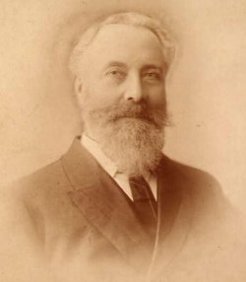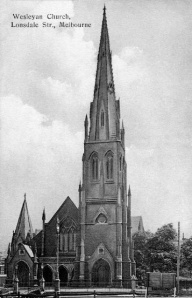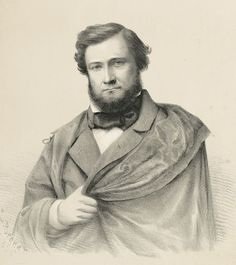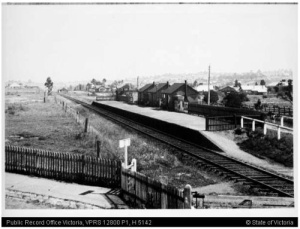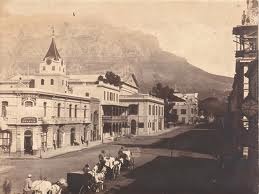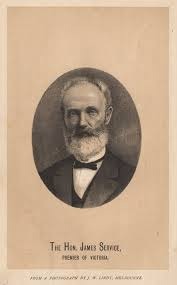Berry Family History in Melbourne, Australia Mid 1850’s – 2014
DEATH OF MR. HENRY BERRY
Merchant and Philanthropist.
Deep regret will be caused by the announcement of the death of Mr. Henry Berry which occurred on Tuesday night at his residence, Otira, Walpole street,Kew.
Mr. Berry had been in failing health for several years, and during the last two years had not taken an active part in the business of Henry Berry and Co. Pty. Ltd. of which he was a member. The funeral will take place this afternoon. A service will be held in the Methodist Church, Highbury Grove, Kew, lat 3 o’clock, and the burial will take place at the Melbourne general cemetery at 4 o’clock.
Mr. Berry, whose 80th birthday was in March, was born near Canterbury, Kent, England, his father being Mr. Thomas Berry, a member of a well-known Yeomanry family in the county.
Being of an adventurous nature, Mr. Berry, at the age of 19 years, decided to seek his fortune in Australia, and he arrived in Melbourne by the sailing ship Nimrod in1856. After following various occupations for the next three years, he began business in 1859, as a salt and general merchant in a galvanised iron building in Spencer street, on the site upon which Brunton’ s flour mills were afterwards built. His enterprise soon caused the business to extend and necessitated larger accommodation. This was acquired farther north, opposite the railway yards, in commodious bluestone premises close towhere the new General Post Office nowstands. Gradually the business grew, and a branch house was established in Port Adelaide in 1878. In the following year, Mr. Howard W. Berry joined his brother, and became a partner in 1888, together with Mr. Henry Berry’s eldest son, Mr.Henry P. M. Berry, the latter retiring from the firm in 1912. Later, branches were opened in New Zealand, Sydney, Fremantle, and Brisbane; and in 1913 the business was transformed into a proprietary company, three of the staff, Mr.Howard Stevens, Mr. Percy T. Berry, and the late Mr. F. J. Wright who had largely helped to build up the business, becoming directors.
Mr. Berry founded the salt-manufacturing business in Australia. His first factory was built at Beeac in this State, but later he devoted his energies to opening up the much larger deposits on Yorke’s Peninsula, South Australia, and a large refinery was erected at Edithburgh, which has now grown into an important shippingport. Twenty one years ago this sectionof the business was amalgamated with others and became the Castle Salt Co- operative Co. Ltd.
Though he never took a prominent part in the public affairs of the State or Com- monwealth, Mr. Berry, however, evinced a keen interest in any movement promoted for the benefit of his fellow-men, and subscribed liberally to such efforts. A loyal Methodist, Mr. Berry took an active part in all matters pertaining to the church and gave generously to support its activities. He was of a most kind- hearted disposition and this may be illus-trated by the fact that for nearly twenty years he gave up his Sunday mornings to teach the mentally afflicted children at Kew Asylum, and, with one or two persons to assist him held a service of song and story for their benefit. He was also their Santa Claus when Christmas came, and each summer, with the assistance of his friends, he gave the children and their attendants a day’s outing at the seaside.
Mr. Berry was three times married. His third wife, who survives him, was the widow of Dr. Heffernan, of Fitzroy. He leaves a grown up family of three sons and four daughters.
Benjamin Berry’s Diary Melbourne 1880-81: Part One : The First Week.
It’s now 2014. Benjamin’s diary was written 134 years ago. My wife is Georgina Berry. Her great grandfather was Howard Wesley Berry, a successful English businessman who arrived in Australia in 1879. His older brother Henry was his partner, Henry arrived in the mid 1850s as a 19 year old looking to make his fortune in the new colony.
It appears that Henry had been in England arranging shipments of salt and other products to be sent out to him in Australia when Benjamin Berry, aged about 40 years old at the time, decided to accompany his brother on the trip to Australia. Two reasons probably decided it for him. Firstly there was a Methodist conference in Melbourne and secondly Benjamin wanted to exhibit some of the apples he had been growing on his property in Kent at the Exhibition in Melbourne in December/January 1880/81.
The Melbourne International Exhibition was held from 1 October 1880 until 30 April 1881. It was the second international exhibition to be held in Australia, the first being held the previous year in Sydney. 1.459 million people visited the exhibition, but made a loss of 277 292 pounds.[3] The exhibition was also opened for entertainment and tourism.
The Royal Exhibition Building, set in the Victorian Carlton Gardens was completed in 1880 to host the exhibition, consisting of over 12,000 square metres. The foundation stone was laid by Victorian governor George Bowen.
After being granted self-governance, Victoria (in 1851) and New South Wales (in 1856), saw a steady economic growth as result of the discovery and exploitation of gold reserves. This growth during the 1850s and 1860s led to rivalry between their respective capitals Melbourne and Sydney. In the 1870s the focus turned to the outside world and proposals were made for organising an exhibition modelled on the great exhibitions of Europe, with an aim to promote commerce and industry, along with art, science and education. Melbourne started preparations in 1879 and filed a plan to the Parliament. Melbourne’s rival Sydney, the older of the two cities, wanted to be the first and organised an exhibition in record time.[1]This Sydney International Exhibition started in October 1879, but it focused mainly on agriculture, so it wasn’t really universal and therefore did not meet the criteria for official recognition by the BIE. Melbourne decided to start their exhibition shortly after the one in Sydney, so the participants could transport their exhibits during the winter of 1880.[2]
Benjamin was in business in Faversham as a Corn merchant, wholesale fruit and vegetable dealer and also as an insurance agent. He was an ardent methodist preacher from an early age and often preached at the local Chapel.
This passion towards the Methodist Church may have been reflected in later years when Howard Berry left a large bequest to the Methodist Church in Melbourne. This found it’s way to Methodist Lady’s College in Hawthorn where a school house was named after the Berry family.
Throughout this diary Benjamin refers to Henry as “Harry”. It is a bit confusing in some of his notes as Harry was also the name of his nephew, Henry’s first born son to his wife Louisa. His nephew’s full name was Henry Parton may and he would have been 16 years old when Benjamin visited Melbourne.
Henry Berry (1836?-1923), businessman, was born at Boughton-under-Blean, Kent, England, the second son of Thomas Berry, farmer, and his wife Elizabeth, née Parton. He was educated at Warman’s Canterbury school. In February 1856 he arrived at Melbourne in the Nimrod and in 1859 after some unprofitable years as a grocer he joined John May, a salt and general merchant. Soon sole owner, Berry expanded the business and was the first to attempt the manufacture of salt from local deposits. His factory at Cundare, near Colac, absorbed £10,000 before he admitted defeat. Berry later developed the important deposits at Edithburgh, Yorke Peninsula, which were amalgamated with others at the end of the century to form the Castle Salt Co-operative Co. In 1878 Berry opened a branch of his general merchandise business in Adelaide. Other branches followed in New Zealand 1885, Sydney 1890, Brisbane 1891, and Perth 1896, and he opened offices in London and Toronto. In 1879 his brother Howard joined the firm and Berry’s son, Henry Parton May, became a partner in 1888. By 1899 Berry employees numbered six hundred in Australia and New Zealand.
Howard Wesley Berry
Born Kent, England .Governing Director of Henry Berry & Co Pty Ltd Wholesale merchants Australia and NZ. Joined his brother the Late Henry Berry founder of the firm in 1879 in the Melbourne business which was founded in 1859. President of the Melbourne Chamber of Commerce 1911-1912 and of the associated Chamber of Commerce of Australia 1912-1913. For some years President of the Importers Association of Victoria. Interested in hospital work, member of the committee of the Eye and Ear hospital of the Metropolitan Supplies Board for the full period of the European War, was a member of the War Council Funds committee of the Executive Council of the Victorian Division of the Australian Red Cross Society and represented the Division of the Australian Council of the British Red Cross Society, President of the Royal Society of St George 1914. His sons served in the First World War-Major Walter W Berry 3rd Australian Pioneers subsequently joined the staff of the General Monash and when the Armistice !
was signed became one of his demobilization officers. Randal A Berry Corporal in the Motor Transport Division subsequently joining the A.F.A in which he served until the close of the war. Randal was the father of Howard Berry. Howard is my wife’s Father.
More on Henry Berry
In 1888 Berry addressed the Australasian Commercial Congress in Melbourne, outlining his experiences of business efficiency in America and calling attention to the ‘want of thoroughness in our Australian youth’. Berry’s success was achieved, contemporaries declared, by grit, endurance, energy and straightforwardness. In addition, Berry was known for his philanthropy and his firm had a reputation for integrity. Berry was a Methodist lay preacher and for twenty years held services in the Kew Asylum for the children to whom he also gave a beach outing each Christmas. He gave £400 a year for a Queen’s College scholarship and supported other church organizations. He was a justice of the peace and a trustee for the new Sailors’ Institute in Port Melbourne.
A sick man for some years before his death at 86 on 10 January 1923 at Otira, Walpole Street, Kew, Berry had been married three times: first, to Elizabeth Hurst; second, to Louisa Delbridge, by whom he had five sons and seven daughters; and third to Mary Louisa Delbridge, widow of Dr Heffernan, who survived him.
Tuesday November 30th 1880
A bright fine day – awake early – very warm – walked to town with Harry and Howard – and was much gratified at the reception Harry met with from some of the first men in Melbourne who all seemed very pleased to see him back. He has evidently secured a splendid position in Melbourne – and I must say I felt very proud of him – we called on many of the leading merchants and brokers – to whom I was introduced and from whom I met a very hearty welcome.
We went to office where Harry received a perfect ovation from his men to whom he introduced me – then for a walk in the City – went to look at many of the fine public buildings – among others we went to Wesley Church and called on Rev. W.L Binks – he was out but saw Mrs B, sister to Mrs Worker, wife of Rev. W. Worker our old superintendent who is now in New Zealand. I saw Mr Worker’s photo in the album to my great delight – we invited Mr and Mrs B to come up to tea and stay the evening which they did – I was very pleased with them and we had a capital time – hearing and telling anecdotes till late at night – Mr Binks invited me to preach for him at Wesley Church one Thursday night but that was deferred “sine die” still I appreciate the compliment all the same.
We went driving during the afternoon to the exhibition to see Harry’s exhibit of salt – and were both very gratified with the display which Howard had made. We did not stay to look over the building as we had to pay our special visit very shortly – but from what little I saw – it will be a great credit to this colony.
On our way home we called in at the Houses of Parliament, the House was sitting and one Hon. Member recognised Harry in the entrance hall and took us into the Speaker’s Gallery without any “order”. I was introduced to several members and saw all the notables, especially the Chief Secretary Mr Graham Berry and the Ex. Hon. James Service.
While we were there the Chief Justice of South Australia was introduced to the House and invited to a seat on the floor of the House. The building is unfinished but will be a very handsome one when completed.
I saw several intelligent handsome faces among the members but I also saw a considerable number that would scarcely bear criticism and whose owners would scarcely be missed within the next election if they failed to resecure their seat. But this is the land where manhood suffrage prevails, and democracy reigns supreme, the natural result of which is that among the representatives there are found some very peculiar specimens of humanity. The Speaker, the honourable Peter Lalor has only one arm having lost the other in the Ballarat riots some years ago.
Wednesday, December 1, 1880
Spent the day in town with Henry dined at Gunsters, spent the afternoon at the store.
Rev Spencer and Mr Williams are here to tea and spend the evening. They left at 6:30 to return to Williamstown where they live. Harry, Howard (nephew) Howard and I played cricket in evening on the lawn.
Thursday, December 2, 1880
Rode to town.
Then went with Harry to visit the deputy manager of the Victorian railways, Mr Fife. Then home to luncheon.
In the afternoon Harry took Louisa, Editha, Felicia and me in a buggy to Glen Iris, 9 miles out, to visit Mr Jenkins who is a larger fruit grower but was formally a poor miner in Cornwall. He is now well-to-do owning the land he cultivates and with his two sons doing nearly all the work.
Dust and heat bad …….. hot wind blowing.
I never saw cherries hang so thickly in England, the crop is singularly wonderful and I noticed the fruit grown by Mr Jenkins are an inferior kind of French grapes similar to “leather flappers”, these are a very hard fleshed kind and are grown for shipping to Sydney, Brisbane and New Zealand.
The trees were just one mass of fruit. We found a few Adams, Crown, Black Arts and Setons, all very good. These berries are small but growing well. Plums are a full crop and apples, pears and other fruit are very heavy. The latter only are ready now and I have taken a great liking to them, indeed I ate them ravenously. They are very refreshing and quite safe to eat. I am afraid to say how many I have consumed already. Currants are scarce, also apricots and peaches. Strawberries are in their prime and are very splendid, not overlarge but quality very fine.
Friday, December 3 1880
A beautiful rain, gentle and cool quite an English day.
Harry, Louisa, four girls and I went to the exhibition in the the morning and greatly enjoyed it. As we had the children with us we did not stay to examine anything closely but only took a general run around. We are to go alone next time and have a thoroughly good look around. As far as I have seen I am very pleased with the exhibition. It does great credit to the Victorians. I was delighted to come across John Hall and Sons showcase, Faversham and London.
I shouted out three cheers for Faversham in which Harry joined with a will. We have seen two or three of the exhibitors who were in the Paris exhibition, the Jerusalem Stand, and that one where we saw the wooden toys being carved. You remember buying a little chair puzzle of them.
I shall be able to give you a better idea of the exhibition as a whole after I have been here a few times.
In the afternoon went to town looked into Harry’s books and business matters then went by the 5.20 pm train to Williamstown, 18 miles there and back, First Class, one shilling, that’s cheaper than English railways to Mr Smiths, a very old friend of Harry’s of 25 years standing. He is Town Clerk of Williamstown and we are with him having tea. Our group comprised Harry, Louisa, Howard and myself together with Mrs Williams, wife of Rev Spencer Williams. We had a very pleasant gathering, walking around the garden, inspected the fruit trees. Fine show of fruit, especially pears and apples and wealth of flowers that would drive Walter almost frantic.
After tea we went to a concert at the Foresters Hall. I have not enjoyed anything of the sort for many and many a long day. The singing was remarkably sweet. The ladies would compare as to personal beauty with any I have seen at English concerts and equally as to their musical skill. A Mr Forrester gave an amusing comic sketch entitled “such is life” his representations of life and character were exceedingly correct and good and many of them intensely amusing. We laughed ourselves almost sore. Mr Smith was one of the singers and did his part splendidly.
We returned by 11.15 p.m. By train to Melbourne. Got home after midnight , pleased but very tired.
Saturday, December 4, 1880
A lovely day.
After the rain Harry and I walked to town through the Richmond Park to the Botanical Gardens in the midst of which , on a pretty eminence, stands the Governor’s House, a very imposing building quite an addition to the beautiful surroundings. I am writing this in a pretty arbor in the middle of the flower beds covered over with honey suckle and other climbers, while before us stretches a lovely lawn with flower beds in many shapes and shrubs of tropical growth only found in hot houses in England in endless profusion. The free ferns and Norfolk Island Pines are lovely and the morning shades of green among the foliage add to the beauty of the scene.
Government House, Botanic Gardens
There are some beautiful pieces of water with black and white swans, ducks too, very tame and interesting. We looked through a glass Conservatorium which is filled with rare and choice plants, ferns, flowers et cetera.
There are plenty of seats and arbors provided for visitors and lovers. We walked down to the Yarra and took a boat to the city through the most charming scenery I have seen.
Our boat man was over 80 years of age.
In the afternoon we had a coach and all drove out to Wimbledon, Northcote to visit Howard’s friends the Wimbles. There were several friends to meet us and we had a most enjoyable day. Croquet, music and singing, chatting etc, until 9:30 PM. At Mr Wibbles request I engaged to take his appointment at Northcote next Sunday evening.
My first appointment in the colony.
Sunday, December 5, 1880
Our first Sabbath in Australia. It is a bright beautiful day, everything most auspicious and happy. We went to Wesley Church in the morning Mr (Rev) Fitchet preached from “watch and pray” and in the evening Rev W.L Binks “Believe in the Lord Jesus Christ” followed by the sacrament of the Lord’s supper. A very blessed service. Eight weeks ago tonight I partook of the sacrament in the Hall of the Faversham Institute.
Four weeks later I attended a similar service at Cape Town, South Africa.
A time long to be remembered and now after voyaging across the great deep in comfort and safety I signalised my first Sabbath here by a similar commemoration.
I enjoy all the services very much. Miss Wimble spent the day with us.
Wesley Church is a very fine building quite an ornament to the city. The parsonage stands on one side, a handsome stone house in a very pretty shrubbery well back from the street. There is a good organ in the church and the singing was good though the choir is incomplete.
Monday, December 6, 1880
Spent the day in town, wrote letters and assisted Henry in the office. We dined at Gunsters. Louisa came to the store for us and we all rode home to tea. Mr Smith and Minny were there. We had some grand music in the evening. Mr Smith is one of the best singers I have met and I’ve never heard Harry play and sing so well before. Minny plays like one inspired and Louisa came out first rate. Altogether it was a great treat. We stayed up chatting and telling tales about our early homelife until after midnight.
Tuesday, December 7, 1880
Harry and I walked to town, it is a cool bright morning. We call on several gentlemen, among others I was introduced to the Honourable James Service ex-Premier.
I had a long chat with him. He hopes I shall like the colony well enough to come and settle here. Harry told him I should be soon in the house and I replied “in that case there would be a friendly relationship between Service and Berry Families which had not existed hitherto. He is going home to England for a holiday in the spring.
We called on a dentist to see about my teeth going into dock and decided that heavy repairs where necessary….. but deferred operations. Then to the public sale room and looked at samples of tea.
Then looked through the free library which is a fine building of great credit to the city. It is the largest institution of its kind in the world.
In the evening we went to Williamstown and to the anniversary of the Wesleyan church by invitation of the Rev Spencer Williams. The friends provided a beautiful tea with fruit et cetera, charged 1/6p each, three times what we pay in Kent. At the public meeting Harry took the chair and in his opening address referred very touchingly to his earliest days in the colony which were spent in Williamstown. Rev J White, E.L Watkins, S. Williams and I spoke and the choir sang several anthems very beautifully.
